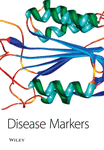Infectious Agents and Xenobiotics in the Etiology of Primary Biliary Cirrhosis
Abstract
Primary biliary cirrhosis (PBC)is a chronic autoimmune cholestatic liver disease that manifests a latitudinal gradient in prevalence and incidence. The mechanisms leading to the initiation and perpetuation of PBC remain largely enigmatic, although it is established that a combination of genetic predisposition and environmental stimulation is required. PBC is also characterized by a high concordance rate in monozygotic twins and is considered a model autoimmune disease because of several features common to other conditions and the relatively homogeneous serological and biochemical features. From a diagnostic standpoint, PBC is characterized by the highest specificity of serum autoantibodies directed at mitochondrial proteins. Several risk factors have been suggested to be associated with PBC, including exposure to infectious agents and chemical xenobiotics that will be critically discussed in the present review article.




